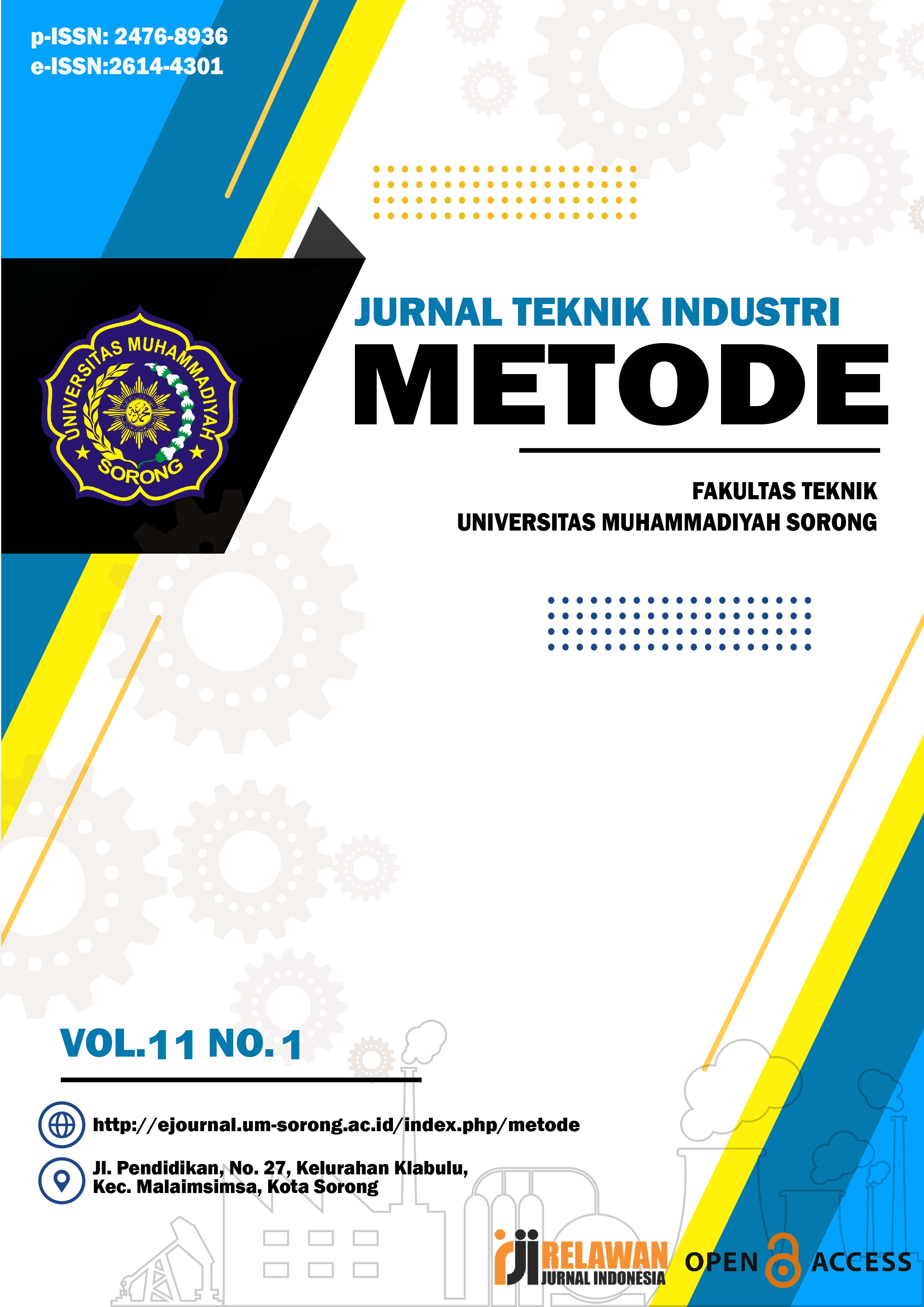Application of Statistical Process Control to Determine the Interest of Teenagers in Using Electric
DOI:
https://doi.org/10.33506/mt.v11i1.4143Keywords:
electric motorcycle, pareto chart, statistical testAbstract
The Indonesian government in the National Energy General Plan (RUEN) targets the number of electric vehicles to be 2,200 four-wheeled vehicles and 2.1 million two-wheeled vehicles which must be achieved at least by 2050. Currently, the number of motorized vehicles that are widely used is motorbikes, because the price is relatively cheap, can penetrate traffic jams and use less fuel when compared to other motorized vehicles. Electric motorbikes are an alternative that can reduce the impact on the environment and support government programs in achieving the RUEN target. This study aims to determine the interest of teenagers in using electric motorbikes. By conducting a survey of 144 teenagers based on 4 aspects, namely Environmentally friendly, price, infrastructure availability and operational costs. After the survey was collected, a statistical test of Validity, Reliability and normality was carried out to determine the level of accuracy of the survey data and the results were Valid, Reliable Questionnaires but the data was not normally distributed. Then by using one of the tools in Statistical Process Control, namely the Pareto Diagram which has a rule of 80: 20, the results showed that Respondents realized that electric motorbikes were more environmentally friendly than motorbikes with gasoline fuel. However, in terms of price, respondents have not yet influenced them in buying electric motorbikes. While in terms of infrastructure availability, respondents also considered it inadequate. Meanwhile, in terms of operational costs, respondents also did not influence their interest in buying.
References
Amin, N. fadilah, Garancang, S., & Abunawas, K. (2023). Konsep Umum Populasi dan Sampel dalam Penelitian. JURNAL PILAR : Jurnal Kajian Islam Kontemporer, 14(1), 15–31.
Asti, M., Supriyadi, I., & Yusgiantoro, P. (2020). Analisa Penggunaan Sepeda Motor Listrik bagi Transportasi Online Terhadap Ketahanan Energi (Studi pada GOJEK). Jurnal Ketahanan Energi, Vol 6(No 1), 19–38. https://doi.org/10.1016/j.enpol.2017.08.015
Dadfar, M., & Lester, D. (2017). Cronbach’s α reliability, concurrent validity, and factorial structure of the Death Depression Scale in an Iranian hospital staff sample. International Journal of Nursing Sciences, 4(2), 135–141. https://doi.org/10.1016/j.ijnss.2017.02.007
Fa’jriah, M., & Sukanta. (2024). Analisis Pengendalian Kualitas Menggunakan Metode SQC untuk Meningkatkan Mutu PT. A Quality Control Analysis Using the SQC Method to Improve the Quality of PT. A. Metode Jurnal Teknik Industri, 10(2), 180–193.
Hong, Y., Linton, O., McCabe, B., Sun, J., & Wang, S. (2024). Kolmogorov–Smirnov type testing for structural breaks: A new adjusted-range based self-normalization approach. Journal of Econometrics, 238(2). https://doi.org/10.1016/j.jeconom.2023.105603
Lenawati, M., Setiawan, D., & Rindra Kurniawan, W. (2023). Menentukan Prioritas Audit Sistem dan Teknologi Informasi Berdasarkan Root Cause Analysis Menggunakan Pareto Chart dan Fishbone. Fountain of Informatics Journal, 8(1), 15–20. https://doi.org/10.21111/fij.v8i1.9440
Neyestani, B. (2017). Seven Basic Tools of Quality Control: The Appropriate Techniques for Solving Quality Problems in the Organizations. Munich Personal RePEc Archive (MPRA). https://doi.org/10.5281/zenodo.400832
Nur, A. I., & Kurniawan, A. D. (2021). Proyeksi Masa Depan Kendaraan Listrik di Indonesia: Analisis Perspektif Regulasi dan Pengendalian Dampak Perubahan Iklim yang Berkelanjutan. Jurnal Hukum Lingkungan Indonesia, Vol 7(no 2), 197–220.
Pratiwi, A. A., Wibawa, B. M., & Baihaqi, I. (2020). Identifikasi Atribut Sepeda Motor Listrik terhadap Niat Membeli : Kasus di Indonesia. JURNAL SAINS DAN SENI ITS, 9(No 1), 35–39.
Purbasari, A., & Pratama, I. Y. (2024). Penerapan Statistical Process Control (SPC) untuk Mengidentifikasi Cacat Produk Coffee Maker Tipe XX. Sigma Teknika, 7(1), 106–115.
Rizal, M., & Khoiroh, S. M. (2023). Penerapan Metode Statistical Process Control dalam Pengendalian Kualitas Kawat Baja. Metode Jurnal Teknik Industri, 9(2), 2023.
Sanaky, M. M., Saleh, L. M., & Titaley, H. D. (2021). Analisis Faktor-Faktor Penyebab Keterlambatan pada Proyek Pembangunan Gedung Asrama MAN 1 Tulehu Maluku Tengah. Jurnal Simetrik, 11(1), 432–439.
Romas Septian, M., Martini, S., Bastari Imran Watimea, R., & Disetujui, T. (2022). Pertimbangan Pelanggan Terhadap Keinginan Membeli (Purchase Intention) Motor Listrik. Jurnal Penelitian Transportasi Darat, 24(1), 21–27. https://doi.org/10.25104/jptd.v24i1.2007
Susila, F. C., Hukum, A. B., & Negara, A. (2019). Hukum dan Studi Penelitian Empiris: Penggunaan Metode Survey sebagai Instrumen Penelitian Hukum Empiris. Administrative Law & Governance Journal, 2(4), 2621–2781.
Wahyuningsih, U. U. (2023). Pengembangan Desain Produk Sepeda Motor Listrik Menggunakan Metode Pengintegrasian Kano Model dalam Quality Function Deployment (QFD). KILAT, 12(1), 49–63. https://doi.org/10.33322/kilat.v12i1.1893
Yang, R., & Yagi, H. (2024). Evaluating occupational values in Japan’s urban farming: A comparison between the Likert scale and Best-Worst Scaling methods. Cities, 155. https://doi.org/10.1016/j.cities.2024.105485
Downloads
Published
How to Cite
Issue
Section
License
Copyright (c) 2025 Yanwar Surya Andika, Taufik Hidayat, Utami Wahyuningsih, Lili Rasyidi, Novia Anggraini

This work is licensed under a Creative Commons Attribution-ShareAlike 4.0 International License.









